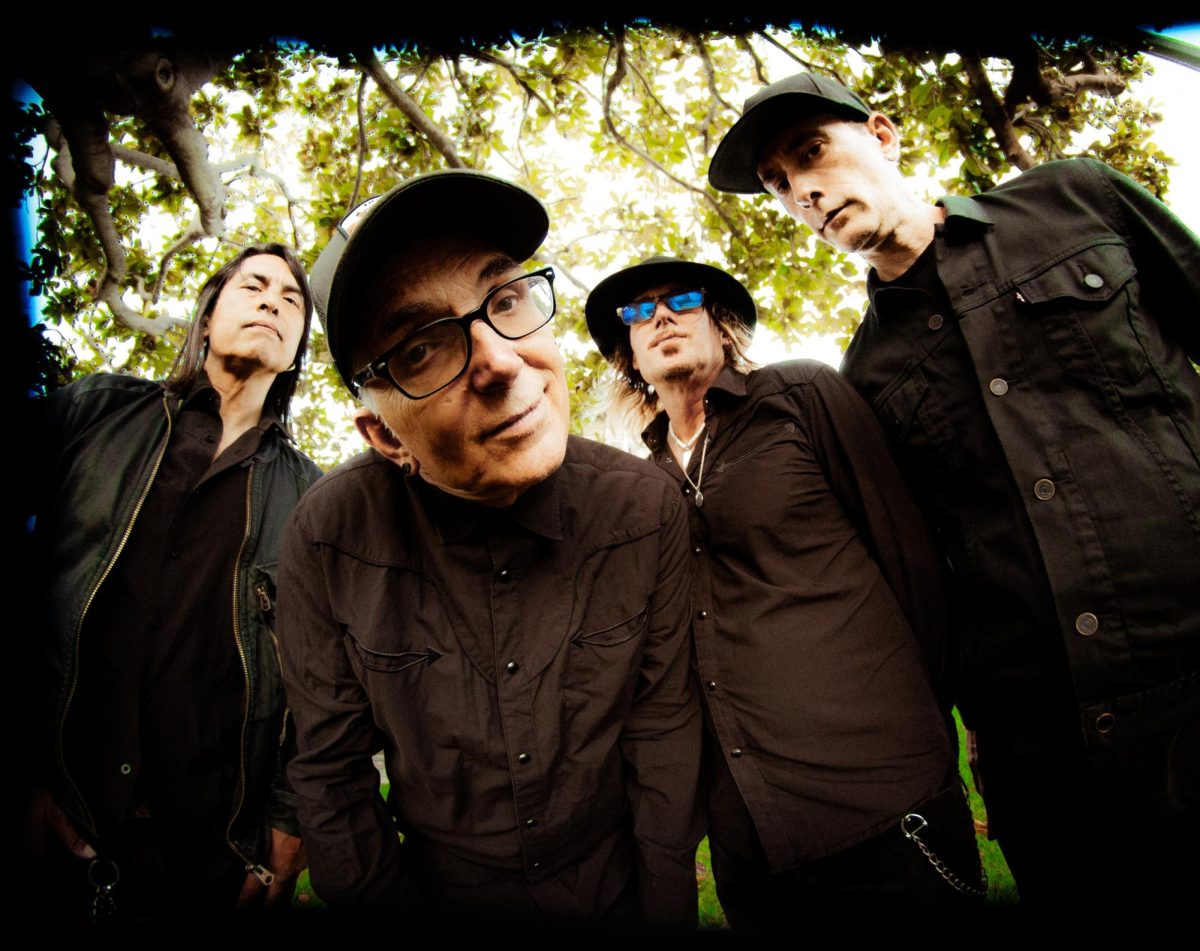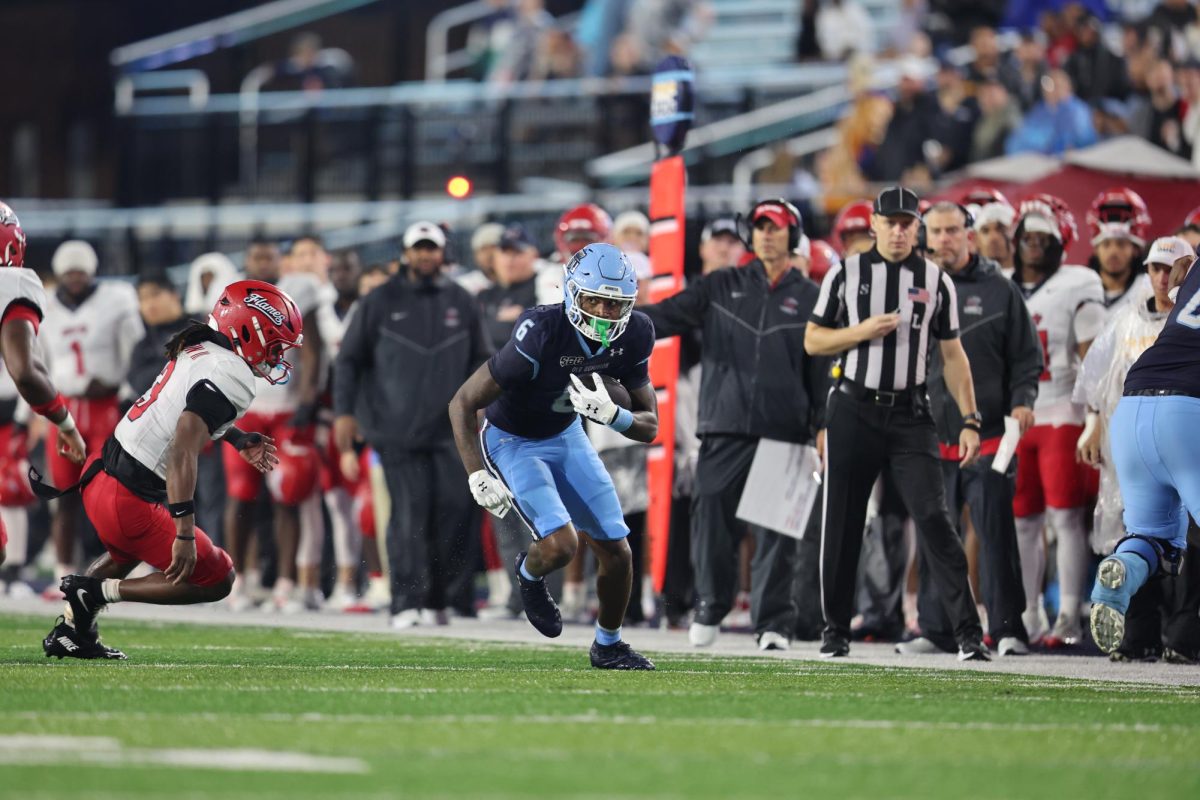
Very recently, Hispanic Heritage Month came to a close.
Although it’s not “in season”, celebrating other cultures can be done at any time and place. This month of recognition shows love to Latino culture by appreciating everything ranging from food, history, to the arts.
However, one underbelly of Latin America deserves much more recognition and respect than it’s usually given credit for.
Netflix’s “Break It All: The History of Rock in Latin America” is a documentary series covering the deep-seated relationship that Latin America has had with rock ‘n’ roll music since its inception. The series was originally released in 2020 and contained six one-hour long episodes, each focusing on a deep dive into a particular era of music.
Seeing the description of the series on Netflix for the first time piqued my curiosity. My Latino household played rock bands like Soda Stereo or Maná being ever present during my youth.
In this day and age, genres like reggaeton have inadvertently become the face of Latino culture. However, it is inaccurate to say that has always been the trend. Rock ‘n’roll has been an era-defining genre within the latino world.
In the past decades of Latin American history, there have been many instances of country-wide rebellions and bold acts of defiance. Rock ‘n’roll, is a genre that has always been seen as controversial and nonconformist, yet ever present in the hearts and minds of the youth. Therefore, I had high expectations for a documentary covering such a special culture that I hold dear to my heart.
The first few minutes of the opening sequence were anything but disappointing. There were clips of so many iconic Latino musicians describing what rock ‘n’roll means to them. Álex Lora of El Tri, Tito Fuentes and Paco Ayalo of Molotov, and Julieta Venegas are a few of the sequence’s recognizable faces.
Then, it cut to the introduction sequence of the series, flashing different videos of iconic concerts and moments captured on stage. What really set the tone of the series was the awe-inspiring clip of Argentina’s Charly García jumping from the ninth floor of a hotel into a pool as an act of a death-defying “you and I are not alike” statement to the press, the public, and the government.
Overall, every episode of “Break It All” was utterly captivating. Not only did it grab my attention and walk me through how the love of this genre started, but it was surprisingly thorough. I was not expecting to see Peru’s Los Saicos, an early 60s band that’s been accredited with pioneering the punk rock sound, in this particular documentary.
Each episode underlined how there was always a rebellious attitude regardless of the style of rock music played.
“Not rock in its form, but rather, rock in its concept,” said Café Tacuba frontman, Rubén Albarrán
This series did a spectacular job highlighting the different sounds that permeated throughout the genre’s history. Take the difference in Caifanes’ “La Negra Tomasa” being so distinct to a Mexican rap group like Control Machete; both are covered in the same series. Rock as a genre has always been fluid with how it’s approached. The beautiful thing that all of Latin America’s rockers stand by is, “This music is ours.”
The sheer exposure to different sounds, the nature of being from a different culture, really goes to show the idea that rock ‘n’ roll as a genre and art form has never truly been the exclusive sound of just one race, nation, or creed. Rock ‘n’roll belongs just as much to Gustavo Cerati as it does to Henry Rollins or Jimi Hendrix. Those reminders of “This is part of our history too” do so much justice to the counterculture devotees who have been targets or outcasts of the status quo, especially within their own cultural communities.
Popular Latin American celebrities like Juanes show up, and in his particular case, it was to talk about the underground metal scene in Colombia. Juanes was originally the frontman for a metal band called Ekhymosis. The simple nod to the underground punk and metal scene in Latin America is such a huge step, and that’s not even acknowledging the several metal festivals that are held in Mexico.
Punk rockers and metalheads outside of Latino culture are aware of this but mainstream media seems to forget the reality that counterculture has an overwhelming presence in Latin America. Which is surprising in its own right considering rock ‘n’ roll was banned, and overall oppressed, for two whole decades in Mexico.
It’s easy to say this docu-series has something for everyone. Bands like Soda Stereo, arguably the largest and most successful rock band to hail from Latin America, carry a sound comparable to The Cure, but so distinct that even a description like that doesn’t do them justice. Again, it’s that aforementioned flexibility that makes this documentary so captivating without repeating itself in the same exact way. Every era has its own heroes, wins, and losses, and the significance it had for the sociopolitical status of its respective time.
In the end, this documentary is severely underrated. Should it have been released in more recent times, it probably would’ve garnered a lot more deserved attention. One might argue that this documentary was more for the fans, but I wholeheartedly believe that the non-fanatic might garner inspiration from seeing the history of a thriving subculture from Latin America. It tries to pay homage to as many notable figures as it possibly can. While not every impactful band or member might be displayed, it sure does a great job of presenting you with a rabbit hole to discover those artists on your own.














